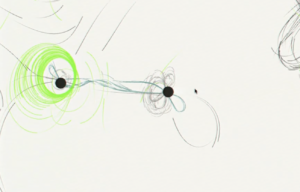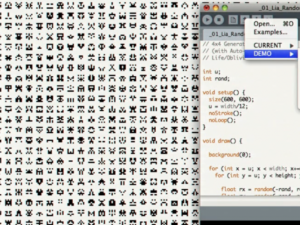Casey Reas’s lecture brought many new perspectives to my thought process when it comes to creating art through technology. It made me wonder in what ways would it be helpful to humanity to create such art forms. What particularly drew my attention was the artwork inspired by Valentino Braitenberg’s book, as shared by Reas. While the core concept of this work isn’t within my primary focus, it serves as a significant part of my ongoing quest to uncover the potential intersections of science and interactive technology. This presentation left a lasting impression on me, fueling my enthusiasm to experiment further with the tools at my disposal. It offered valuable insights into the functioning of the nervous system, highlighting the intricate interplay between order and chance.
Reas’s discourse significantly reshaped my perspective on digital art. I used to believe that art required a profound underlying message or purpose, that artists should embark on their creative journey armed with a well-defined plan and a clear destination in mind. Now, I am inclined to see art as an entity that need not be burdened with the obligation of conveying a deeper meaning. This newfound perspective grants artists the freedom to explore novel artifacts and unconventional methods, allowing art to emerge organically and inviting diverse interpretations. I would be contradicting myself by saying art becomes a canvas for personal experiences and individual thoughts that reflect how each of us is uniquely wired to perceive things differently, because how authentic and personal are digital art works? And how much can we interpret if the art piece is too abstract and lacks symmetry?
This brings me to the discussion of Fractal invaders in Reas’s lecture. While the demonstration initially unfolds as a display of pure randomness, it gradually reveals elements of symmetry and duplication. These emerging images prompted our imaginations, compelling us to find meaning in what was unfolding before us. This particular instance is just one among many that reinforced my belief that certain art projects don’t necessarily rely on strict rationality. Even if a piece of art doesn’t lead us directly to a specific thought or idea, it challenges us to construct our own interpretations and derive meaning from it but that’s not always the case.
Furthermore, Reas’s presentation challenged me to delve deeper into the artist’s unique vision. However, to what extent does randomness with no vision can be considered art ? Some art works that are considered abstract or some works that accidentally became a piece of “art”, make me contemplate on whether or not generative art is considered as an art project created with intention and authenticity.

